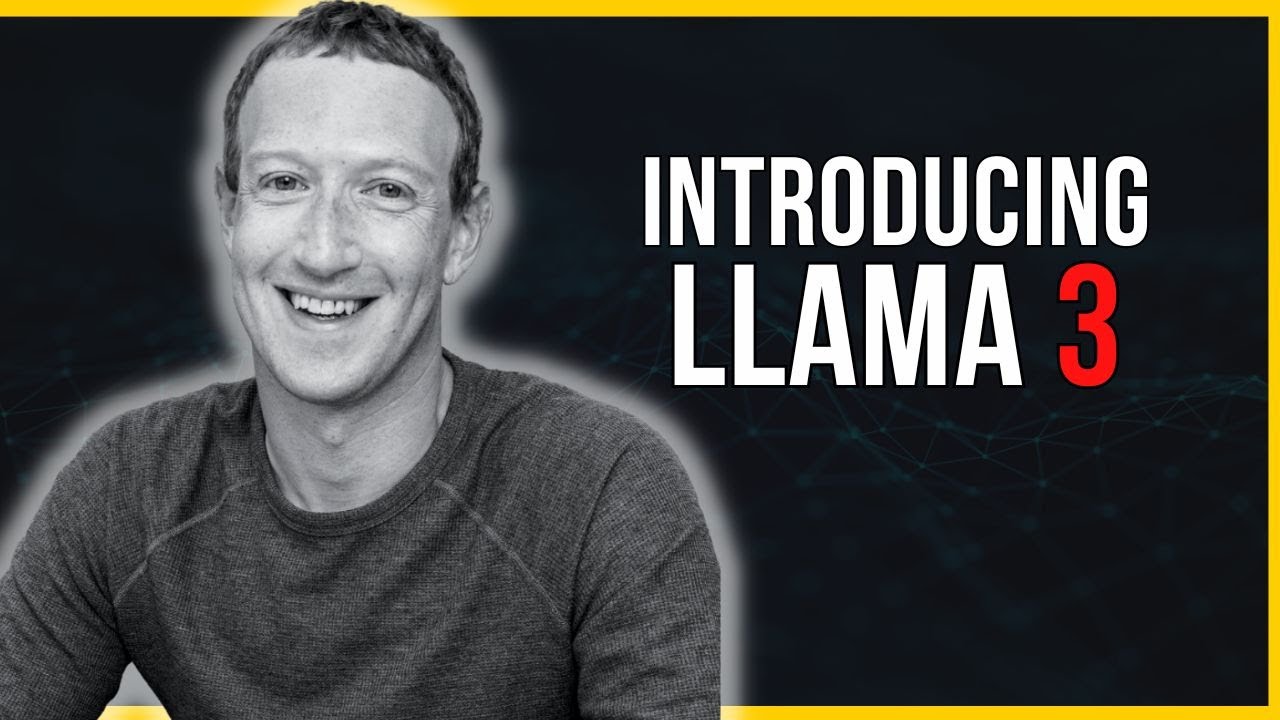EASIEST Way to Fine-Tune LLAMA-3.2 and Run it in Ollama
Summary
TLDRThis video demonstrates how to fine-tune Meta's newly released Llama 3.2 models using the Unslot platform. It focuses on fine-tuning the 3 billion-parameter model and running it locally with Olama. The tutorial walks through the process of preparing datasets, adjusting parameters, and loading models for efficient on-device use. It also covers using Lora adapters for fine-tuning and saving models for local deployment. The video emphasizes the ease of running smaller models locally and hints at future videos on the vision capabilities of the 11 and 90 billion-parameter models.
Takeaways
- 🚀 Meta released LLaMA 3.2 with four models, including lightweight and multimodal versions.
- 🧠 The lightweight models (1B and 3B) are ideal for on-device tasks, while the larger models (11B and 90B) focus on vision-related tasks.
- 🎯 Fine-tuning LLaMA 3.2 models can be done using the Unslot library, which provides an efficient way to work with large language models.
- 💾 LLaMA Stack was introduced, offering a streamlined developer experience for deploying these models.
- 📊 The fine-tuning process in the video uses the Finetom dataset with 100,000 multi-turn conversation examples.
- ⚙️ Key hyperparameters include max sequence length (2048), floating-point precision (4-bit quantization), and batch size, all impacting memory usage and training performance.
- 🔧 LoRA adapters are used for efficient fine-tuning by training specific modules and merging them with the original model.
- 📜 The importance of using a correct prompt template for instruct and chat versions of LLaMA 3.2 is emphasized during fine-tuning.
- 💡 The trained model can be run locally using the OLLaMA tool, and fine-tuned models can be saved in GGUF format for local use.
- 💻 The example shows how fast the 3B model performs locally for tasks like generating Python code, highlighting the potential of running LLaMA models on-device.
Q & A
What is Lama 3.2, and what are its key features?
-Lama 3.2 is a new family of models released by Meta, consisting of four different models, including multimodal models designed for both language and vision tasks. The key features include lightweight 1 and 3 billion parameter models, along with larger 11 and 90 billion parameter models for advanced tasks. The smaller models can run on devices, while the larger ones are more suited for complex tasks like vision.
Why are the 1 and 3 billion models significant?
-The 1 and 3 billion models are significant because they can run on-device, such as on smartphones. This makes them more accessible and practical for everyday use, providing high performance without requiring large computational resources.
What is 'unslot' and how is it used in the fine-tuning process?
-Unslot is a framework used for fine-tuning language models, like Lama 3.2. In this video, it is used to fine-tune a pre-trained model on a specific dataset. Unslot simplifies the process by providing tools like the fast language model class for handling large language models efficiently.
How does one prepare their dataset for fine-tuning a Lama model?
-To prepare a dataset for fine-tuning a Lama model, the dataset must be formatted to fit the model's prompt template. For Lama 3.1 and 3.2 instruct models, the template expects a role-based approach, such as 'system', 'user', and 'assistant' roles. Any dataset used must be adjusted to match this structure.
What is the role of Lora adapters in fine-tuning, and why are they used?
-Lora adapters are used to fine-tune smaller parts of the model, instead of updating all the model's parameters. This reduces memory usage and computational requirements, making fine-tuning more efficient, especially for large models. They allow targeted adjustments while keeping the original model weights intact.
What parameters are important when loading the Lama 3.2 model for fine-tuning?
-Key parameters include the max sequence length, which is dependent on the dataset size, data types (FP16, FP8, or automatic selection based on hardware), and quantization to reduce memory usage. For fine-tuning, a 4-bit quantization is used to decrease the model's memory footprint.
How is the supervised fine-tuning process handled using the TRL library?
-The TRL library from Hugging Face is used for supervised fine-tuning. It involves providing the model, tokenizer, and dataset, specifying the columns for prompts and responses, and defining parameters like sequence length and batch size. The process includes calculating the training loss based on the model's output.
What is the significance of 'max steps' and 'epochs' in the training process?
-Max steps and epochs control how long the model trains on the dataset. An epoch is one complete pass through the entire dataset, while max steps limit the number of training steps within an epoch. Adjusting these allows balancing the training time with the size of the dataset and the desired output quality.
What are the benefits of running a fine-tuned Lama 3.2 model locally using O Lama?
-Running a fine-tuned Lama 3.2 model locally allows faster and more private inference without relying on external servers. This makes the model more accessible, especially for lightweight versions like the 3 billion parameter model, which can run efficiently on local devices.
What are the next steps for fine-tuning larger models like the 11 and 90 billion versions?
-For larger models like the 11 and 90 billion versions, fine-tuning will involve handling their multimodal capabilities, particularly for vision tasks. These models require more resources and have additional complexities due to their vision component, but future videos will focus on these applications.
Outlines

このセクションは有料ユーザー限定です。 アクセスするには、アップグレードをお願いします。
今すぐアップグレードMindmap

このセクションは有料ユーザー限定です。 アクセスするには、アップグレードをお願いします。
今すぐアップグレードKeywords

このセクションは有料ユーザー限定です。 アクセスするには、アップグレードをお願いします。
今すぐアップグレードHighlights

このセクションは有料ユーザー限定です。 アクセスするには、アップグレードをお願いします。
今すぐアップグレードTranscripts

このセクションは有料ユーザー限定です。 アクセスするには、アップグレードをお願いします。
今すぐアップグレード関連動画をさらに表示

New Llama 3.1 is The Most Powerful Open AI Model Ever! (Beats GPT-4)

Zuckerberg cooked a beast LLM - LLama 3.1 405B!!!!

Llama 3 e Meta AI: demo dell'AI GRATIS di Meta

LLAMA 3 Released - All You Need to Know

Things You Should NEVER Do With Your Quest 3...

Phi-3-mini vs Llama 3 Showdown: Testing the real world applications of small LLMs
5.0 / 5 (0 votes)
